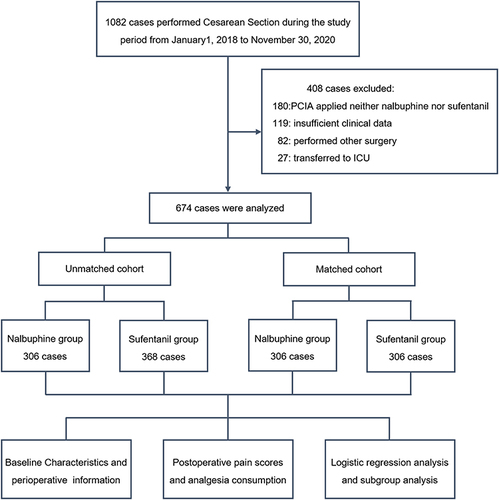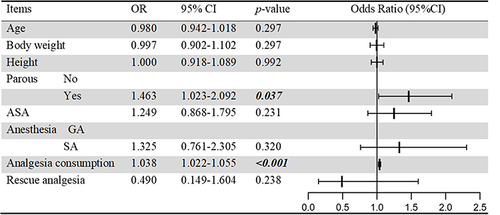Figures & data
Figure 1 Flowchart schematic for participant inclusion in the trial. 674 patients were included in our trial. In the unmatched cohort, 306 cases in the Nalbuphine group and 368 cases in the Sufentanil group. In the matched cohort, there are 306 cases in both the Nalbuphine and Sufentanil groups.

Table 1 Demographics and Characteristics of Participants
Table 2 Primary, Secondary, and Side Effects Outcomes
Figure 2 Multiple logistic regression model for predictors may affecting visceral pain. The results showed that multiparous and increased total analgesic consumption were associated with increased odds of suffering from severe uterine contraction pain. Bold values denote statistical significance at the p<0.05 level.

Table 3 Subgroup Analyses of Clinical Characteristics Associated with Pain Management
